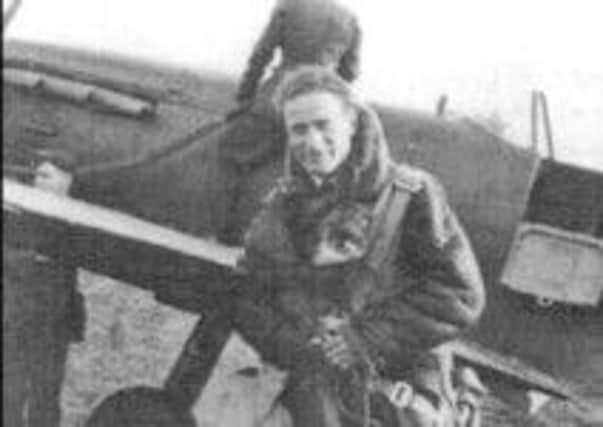Leith man recalls Second World War air attack


Several stunned teenagers strain their eyes skyward, their match forgotten in the clamour of the dogfight.
Overhead a Spitfire sprays a hail of bullets after a fleeing German bomber.
Advertisement
Hide AdAdvertisement
Hide AdThe Junkers 88, possibly one of two later shot down, passes so close that the boys can see the pilot’s head.
They did not realise at the time, but they were witnessing something momentous – the first air attack over Britain and one of the first sightings of the legendary Spitfire in action.
Among the boys, who all attended Daniel Stewart’s College, was 15-year-old Archie Shiel.
It was October 16, 1939 and 75 years ago to the day he can still recall exactly what happened.
“I was on the foreshore at Cramond and I looked up and saw planes diving and swerving from a distance,” he says. “I thought it was an exercise but a little time later I saw a German Junkers followed by a Spitfire which was firing into it.
“I could hear the rattle of the machine gun as he pumped bullets into it.
“It was something which you can never forget. I could even see the pilot in the Junker.”
Archie, now 91 and living in Leith, adds: “The last I saw, the bomber disappeared over the horizon with the Spitfire after it. It was exciting.”
Advertisement
Hide AdAdvertisement
Hide AdNo alarm had sounded, and British air defence was taken completely by surprise with the raid.
The Luftwaffe had orders to attack Royal Navy vessels in the Firth of Forth and followed the instructions to the letter, though terrified train passengers crossing the Forth Bridge mistakenly believed they were the target.
The German planes were at the outermost limits of their range but damaged the destroyer HMS Southampton and two cruisers, HMS Mohawk and HMS Edinburgh.
The attack claimed the lives of 16 Royal Navy crew and wounded another 44, although this information was not made public at the time.
Spitfires of 603 Squadron Edinburgh were scrambled from Turnhouse Aerodrome, as was 602 Glasgow Squadron based at Drem in East Lothian.
Even now, friendly debate exists about who shot down the first plane, but Patrick Gifford, leader of the Edinburgh squadron, is generally credited with it.
He was awarded the Distinguished Flying Cross and was shot down over Belgium in May 1940, his body never found.
The ensuing battle raged through Wallyford and Prestonpans where the fighters finally brought down a German plane in waters off Port Seton, the first hostile aircraft to fall prey to the Spitfire.
Advertisement
Hide AdAdvertisement
Hide AdA second bomber was brought down just moments later by Glasgow’s 602 Squadron, also plunging into icy waters of the Firth of Forth, near Crail in Fife.
The surviving German crewmen were all rescued by local fishermen.
William Simpson has written Spitfires Over Scotland, which is a biography of Gifford, and has co-authored the Greatest Squadron of Them All.
He believes that the incident and the pilots themselves deserve more recognition.
He says: “So many people don’t seem to realise this happened. This was significant. It was the first time that the Germans had attempted to attack anything within British airspace.
“They were trying to attack Royal Navy ships anchored in the east of the Forth Bridge and were intercepted by two squadrons flying Spitfires. What was also significant and interesting is that these squadrons weren’t regular air force flying the latest Spitfires, but auxiliaries or reservists.
“A lot of people think they don’t get the credit they deserve.
“People have heard about the Battle of Britain, but these guys, who started the whole thing, are virtually unknown.”
Advertisement
Hide AdAdvertisement
Hide AdIt is hoped that an exhibition opening at South Queensferry Museum this week to mark the anniversary of the raid will help to raise awareness of the raid.
David Ostler, 62, from Longniddry, has been campaigning for the provision of a memorial of the battle and its unsung heroes and is involved with the project.
He says: “The Second World War was the first campaign in history where air power was used to any extent and proved crucial.
“The aircraft probably best known from the war is the Spitfire and this was the first instance it was used to good effect.”